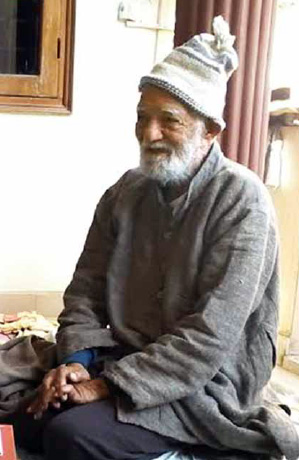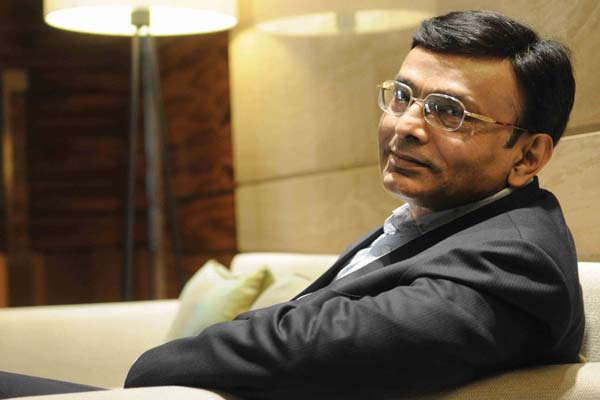Friend or Foe, all are alike, and US President Donald Trump intends to repair history’s biggest mistake of showing concessions to trading partners who for years have been feeding off the economy of America and weakening it.
Well, that’s the thinking and rationale behind President Trump’s omnibus tariffs on 60 countries of the world who he says have been feeding off America and weakening its economy over the years. The tariffs are one way of correcting the mistakes of previous regimes, essentially the Democratic ones. These 60 countries, he terms, as the offenders for America.
Trump announced a baseline 10% levy on all U.S. trading partners, in addition to significant reciprocal tariffs on about 60 “worst offender” countries that have trade policies unfriendly to the U.S.
Other headlines: The 25% tariffs on U.S. neighbours Canada and Mexico will remain, along with the 25% tariffs on auto parts and cars made abroad. Also, expect additional tariffs related to specific sectors like pharmaceuticals and semiconductors. Expect pharma products (India and China) and steel and aluminium (again China and India) to be taxed heavily to promote local steel and alumina industry in the US.
The White House has said the 10% tariff is non-negotiable, set to take effect April 5. CNBC analysts called it the “worst of the worst-case scenario” for the markets, as traders were hoping the President wouldn’t go as big.
The Trump Pitch: The US has been “ripped off” for years, and this will convince companies to move manufacturing and jobs back to the U.S, MO News podcaster said in a report. .
The Pushback: This will immediately raise costs for U.S. businesses, increase prices for consumers and will lead to inflation and a potential recession.
WHAT THIS COULD LOOK LIKE
What Are Tariffs: Tariffs, or taxes on imports, require companies based outside of the U.S. (or American companies that import parts from abroad) to pay more to bring items into the country.
Those costs ultimately get passed down to consumers.
In the short-term, that could mean on average a $9,000-$25,000 increase on building a home here due to the foreign materials and appliances, and up to $8,000 for cars made with foreign parts or assembled abroad. Several automakers have already announced plans to increase car prices.
Expect higher prices on everything from seafood (we import 80% of it), to shoes and clothing, to furniture, to electronics.
Tariffs are intended to reduce demand for foreign products over the long term and boost domestic manufacturing.
What’s the Goal: Trump is using these tariffs as a catch-all economic tool, promising short-term pain for long-term gains. He claims they will raise trillions in revenue and revive American manufacturing.
He promised that stronger competition will lead to lower prices.
Additionally, it serves as a negotiating tactic with countries that rely on American trade, like Canada, allowing Trump to achieve other non-economic goals.
Trump explained that he believes China charges the U.S. 67% in various tariffs and unfair trade practices, so “we’re gonna be charging a discounted reciprocal tariff of 34%.” A previous 20% tariff on imports from China will be added to the 34% reciprocal tariff, meaning companies will now face a 54% additional cost to import goods from China to the U.S.
These are set to be imposed — along with levies against Japan (24%), the E.U. (20%), and others — on April 9.
Other countries’ tariffs on the U.S. along with “currency manipulation and trade barriers” were factored into Trump’s reciprocal tariff rates.
Exemptions: The majority of pharmaceuticals come from abroad, and these will be exempt from the tariffs for now. Semiconductors, certain minerals, and copper will also be shielded from these levies.
We can expect countries to announce their own counter tariffs on the U.S. in the coming hours and days, and others may lower their tariffs in response hoping to negotiate, India being an example, the biggest exporter of pharmaceuticals to the USA and does not wants its bottom line to suffer, its ready to lower tariffs on US made products entering India in exchange for its pharma products entry into the US under a low tariff regime.
It’s unclear how long these tariffs will be in place, if there is wiggle room to bring them down, or if they could go up, trade analysts said.
Many industries are reacting, with the National Restaurant Association saying the levies “will create change and disruption that restaurant operators will have to navigate to keep their restaurants open,” and the National Retail Federation noting that these tariffs will create anxiety and uncertainty for American businesses and consumers.
World leaders criticize Trump tariffs as ‘major blow’
European Commission President Ursula von der Leyen said the US tariffs will have “immense consequences”. Donald Trump’s decision to impose new tariffs on all goods entering the US is a “major blow to the world economy”, European Commission chief Ursula von der Leyen has said.
Her comments echo those of a number of other countries, including China, which has expressed its opposition to the move and has warned it will take “resolute countermeasures” against the US. Their words of warning come after the US president announced a universal 10% tariff on all imports into the US from 5 April. Around 60 countries will also be hit with steeper tariffs from 9 April.
Trump said the measures were payback for unfair trade policies, adding that he had been “very kind” in his decisions.
Von der Leyen said the new tax imports will see “uncertainty spiral”, causing “dire” consequences “for millions of people around the globe”. She emphasized the impact on the most vulnerable countries, pointing out that some of those nations are now subject to some of the highest US’S tariffs.
The EC chief vowed Europe would take a unified approach and warned that the European Union – which will be subject to a 20% tariff – is preparing countermeasures in case negotiations fail.
“If you take on one of us, you take on all of us”, she said.
Italy’s Giorgia Meloni, a Trump ally, said the decision was “wrong” but that she would work towards a deal with the US to “prevent a trade war”. Her Spanish counterpart Pedro Sánchez said Spain would “continue to be committed to an open world”, while in Ireland, Taoiseach Micheál Martin said Trump’s decision was “deeply regrettable” and benefitted “no-one”.
Outside the EU, China – one of the countries deemed the “worst offenders” by the US president – was hit with a 34% tariff on goods, on top of an existing 20% levy, bringing total duties to at least 54%.
The ministry of commerce urged the US to “immediately cancel” the tariffs, adding that China would “resolutely take countermeasures to safeguard its own rights and interests.”
South Korean acting President Han Duck-soo said the global trade war “has become a reality” and his government would be looking at ways to “overcome the trade crisis” after the East Asian country was hit with a 25% rate.
Japan said its 24% levy was “extremely regrettable” and could violate World Trade Organization and US-Japan agreements, while Thailand said it would negotiate its 36% tariff.
Economic officials in Israel, which had scrapped all tariffs on American imports ahead of the announcement, were said to be in “complete shock” over its 17% tariff, local media reported.
“We were sure that the decision to completely cancel tariffs on imports from the US would prevent this move”, an official told local media. White House officials said its levies were reciprocal to countries, such as China, which it said charge higher tariffs on US goods, impose “non-tariff” barriers to US trade or have otherwise acted in ways the government feels undermine American economic goals.
Leaders from countries subject to the 10% baseline rate have also reacted to Trump’s measures, with Australia’s Anthony Albanese saying Americans would end up paying the biggest price for what he called “unjustified tariffs”. His government will not impose reciprocal measures, he said, adding: “We will not join a race to the bottom that leads to higher prices and slower growth”.
A Downing Street source told the BBC that the UK’s lower tariff “vindicates” the government’s recent efforts towards a trade deal with the US. Business Secretary Jonathan Reynolds said the government remained “fully focused on negotiating an economic deal with the US that strengthens our existing fair and balanced trading relationship”.
In Latin America, its biggest economy, Brazil, approved a law in congress on Wednesday – the Economic Reciprocity Law – to counter the 10% tariff imposed by Trump.
The foreign ministry said it would evaluate “all possible actions to ensure reciprocity in bilateral trade, including resorting to the World Trade Organization”. Shortly after Trump’s announcement, US Treasury Secretary Scott Bessent warned countries not to “retaliate” and “sit back, take it in”. “Because if you retaliate, there will be escalation”, he told Fox News.
Noticeably, the US’s two biggest trade partners, Canada and Mexico, were not mentioned in Wednesday’s announcements. The White House said it would deal with both countries according to previous executive orders, which imposed 25% tariffs on the two nations as part of efforts to address fentanyl and border issues.
Regardless, Canada will still be impacted by the tariffs, Prime Minister Mark Carney said. Measures such as the 25% tariff on automobiles starting at midnight on Thursday would “directly affect millions of Canadians”, he added.
He vowed to “fight these tariffs with counter measures”, adding that the US levies would “fundamentally change the global trading system.”
Trump’s tariffs on China, EU and more, at a glance
Donald Trump announced a sweeping new set of reciprocal tariffs on Wednesday, arguing that they would allow the United States to succeed.
Trump’s tariffs, which he imposed via executive order, are expected to send economic shockwaves around the world. The White House released a list of roughly 100 countries and the tariff rates that the US would impose in kind.
Here are the basic elements of the plan.
10% baseline tariff
In a background call before Trump’s speech, a senior White House official told reporters that the president would impose “baseline tariffs” on all countries. That rate is set at 10% and will go into effect on 5 April.
Some countries will only face the base rate. These include:
United Kingdom, Singapore , Brazil , Australia , New Zealand , Turkey , Colombia , Argentina , El Salvador , United Arab Emirates , Saudi Arabia
Custom tariffs for ‘worst offenders’
White House officials also said that they would impose specific reciprocal tariffs on roughly 60 “worst offenders”, to go into effect on 9 April.
These countries charge higher tariffs on US goods, impose “non-tariff” barriers to US trade or have otherwise acted in ways the government feels undermine American economic goals.
The key trading partners subject to these customized tariff rates include:
European Union: 20% , China: 54% , Vietnam: 46% , Thailand: 36% , Japan: 24% , Cambodia: 49% , South Africa: 30% , Taiwan: 32%
No additional tariffs on Canada and Mexico
Canada and Mexico are not mentioned in these new tariff announcements.
The White House said they would deal with both countries using a framework set out in previous executive orders, which imposed tariffs on Canada and Mexico as part of the administration’s efforts to address fentanyl and border issues.
He previously set those tariffs at 25%, before announcing some exemptions and delays.
No additional US tariffs for Canada, but no relief either 25% tariffs on auto imports
In addition, the president announced the US would impose a “25% tariff on all foreign made automobiles”.
Those tariffs would go into effect almost immediately, at midnight on 3 April.
Vietnam, Trump tariffs, China , Taiwan , Donald Trump , Mexico , US politics , United States , Canada
Can Vietnam golf its way out of new Trump tariffs? World leaders criticise Trump tariffs as ‘major blow’
EU chief Ursula von der Leyen says US tariffs will see an “uncertainty spiral” as world leaders react to Trump’s announcement.
The World
Chris Mason: UK relief but not delight at Trump tariffs
How the world responds to the tariffs will have economic and political consequences for the UK, writes our political editor.
US & Canada
Trump to charge high tariffs on ‘worst offenders’ globally
The president says the US has been “pillaged, raped and plundered” for years by international trade partners.
Trump’s tariffs are a longtime goal fulfilled – and his biggest gamble yet
The president acknowledged that he will face pushback from some, but he urged Americans to trust his instincts.
EU preparing ‘further countermeasures’ to protect its interest, von der Leyen says
US President Donald Trump announced 20% tariffs on EU goods on Wednesday.
The EU is “preparing for further countermeasures” to protect its interest, Ursula von der Leyen said after Donald Trump announced 20% levies on European goods, urging the US to “move from confrontation to negotiation”.
“We are already finalizing a first package of countermeasures in response to tariffs on steel. And we are now preparing for further countermeasures, to protect our interests and our businesses if negotiations fail,” the Commission president said on Thursday from Samarkand, Uzbekistan, where she will attend the first-ever EU-Central Asia summit.
“We will also be watching closely what indirect effects these tariffs could have, because we cannot absorb global overcapacity nor will we accept dumping on our market,” she added.
The US President on Wednesday imposed a minimum 10% tariff on all countries, with the EU put on a list of 60 “worst offenders” and slapped with a higher tailored rate of 20%. The levies are scheduled to come into force next Wednesday.
Tariffs on automobiles made outside the US of 25% were also announced with immediate effect.
Sweden and Ireland have already said in statements that they “regret” the additional tariffs.
“We don’t want growing trade barriers. We don’t want a trade war. That would make our populations poorer and the world more dangerous in the long run,” Swedish Prime Minister Ulf Kristersson said.
“But – Sweden and the Swedish Government are well prepared for what’s happening now. We stand on solid economic ground, with world-class public finances,” he added.
Ireland’s Tanaiste, Simon Harris, said in a statement that the bloc “must remain calm and measured in our response”, adding that “the EU and Ireland stand ready to find a negotiated solution with the US”.
“Together with my government colleagues, my officials and the EU we will be reviewing the situation and the best way to respond in the coming hours and days. The EU will have to respond in a proportionate manner which protects our citizens, our workers and our businesses,” he added.
The bloc, von der Leyen said earlier this week in an address to the European Parliament, holds a lot of cards: “from trade to technology to the size of our market” and would “approach these negotiations from a position of strength”.
The EU recorded a surplus of goods with the US €156.6 billion in 2023 but a deficit of services worth €108.6 billion.
Brussels already has two lists of US products that could be hit with tariffs, EU officials previously said, including one that contains goods that have been subject to suspended tariffs since 2018. Further measures may be necessary, the officials said, that could potentially target services.
In her short address, Von Der Leyen said she agrees with Trump “that others are taking advantage of the current rules” and that she is “ready to support any efforts to make the global trading system fit for the realities of the global economy.”
“But I also want to be clear: Reaching for tariffs as your first and last tool will not fix it,” she said, adding: “Let’s move from confrontation to negotiation.”
The president announced a slew of “reciprocal tariffs” on more than 180 countries and territories, including a 20% tariff on goods being imported from the EU and 10% on goods from the U.K.
The U.S.′ biggest economic rival China was hit with a new 34% tariff rate which will come on top of the existing 20% tariffs on U.S. imports from China, taking the effective total tariffs to 54%.
See Trump’s list: More than 180 countries and territories facing reciprocal tariffs
European Commission President Ursula von der Leyen responded to the tariffs announcements by saying the European Union is preparing further countermeasures against U.S. tariffs if negotiations fail. China, meanwhile, said Thursday that it would take “resolute counter-measures” against the sweeping U.S. tariffs and urged Washington to cancel the unilateral tariff measures.
European exporters will be closely watched during the trading day, with shares of automakers expected to slide as Trump’s 25% tariffs on imported vehicles to the U.S. take effect. Shares of industrial machinery exporters and pharmaceutical and medical device producers are also likely to see declines.
In charts posted on social media, the White House shows the effective tariff rates they claim other countries impose on American goods, including by “currency manipulation and trade barriers.”
An adjacent column shows the new tariff rates the U.S. will impose on each country or territory, including the European Union. The reciprocal rates are not necessarily the only U.S. tariffs these countries will face.
Trump held up the chart when he unveiled his tariff policy in the White House Rose Garden.
Source: Multiple publications including networks such as Euro News and BBC.
Contributor, IANS - Washington DC/New York
Executive Editor, Corporate Tycoons - Pune, India
Executive Editor, The Flag Post - Bengaluru, India
Contributor, The Statesman, Hindu Business Line, Sarkaritel.com, Diplomacyindia.com
Former Economics Editor, PTI - New Delhi, India
Former Communications Advisor,
Alstom Group of Companies, SA - France/Belgium

























































